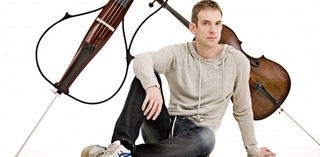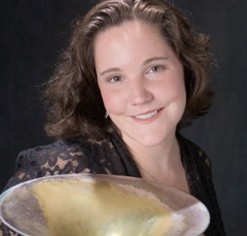|
Back
Putting More Life Into Death New York
Isaac Stern Auditorium, Carnegie Hall
02/21/2014 - & February 20, 22, 23, 2014 (Philadelphia)
Richard Strauss: Metamorphosen, A Study for 23 Solo Strings
Dmitri Shostakovich: Cello Concerto No. 1 in E-flat Major, Opus 107
Ludwig van Beethoven: Symphony No. 3 in E-flat Major “Eroica”, Opus 55
Johannes Moser (Cellist)
Philadelphia Orchestra, Yannick Nézet-Séguin (Music Director and Conductor)

Y. Nézet-Séguin (© Philadelphia Orchestra)
Last night’s concert was encompassed by death. But–like the dissatisfied movie director doing a second take on Juliet lying deceased–Yannick Nézet-Séguin insisted to his orchestra, “Put more life into it!”.
Mr. Nézet-Séguin is one of the most electrifying conductors in America today, probably to the unspoken chagrin of more conservative Maestros. But I had never heard such lively performances as his three works last night. Even Richard Strauss’s Metamorphosen, which sound pathetic when played over anything electronic, was given a performance which eked out every emotion from the 85-year-old composer.
Confessedly, I had never heard Metamorphosen played live, and was not looking forward to the 30-minute work. Though this was not a piece for an ensemble on disc. This is for 23 solo strings. And while Strauss had no use for “modern” music, the music written 60 years ago, embraced the most advanced spatial music of the time.
In fact, visually, the strings of the Philadelphia Orchestra, with violins and violas standing, would have looked like a terrible ensemble, each player fiddling with different bowings, different strings. But Mr. Yannick Nézet-Séguin, using the luscious colors of the Philadelphia ensemble, and the most heartfelt 19th Century emotional drive of the composer, (which, if he wouldn’t have plagiarized himself, could have been titled Death and Transfiguration) offered the most passionate reading possible.
At the end–when only a few Philistines in the audience dared to applaud immediately–I thought that, should it be discovered that I am the long-lost heir to the Prince of Esterházy, I would hire 23 strings to sit around my apartment and play the same Strauss work when I called them in.

J. Moser (© IMG)
The following works didn’t even attempt to enlighten death. Both were mind-boggling in their speed. In the Shostakovich First Cello Concerto, this was all to the good. Johannes Moser was the replacement for Truls Mork, and he came out swinging. Whatever tempo the Maestro had set, the young Mr. Moser took the dark tone of his cello and ran with it. The opening Allegretto started off at the right speed, but Mr. Moser instinctively decided that this piece needed more than love. It needed rage, even happy rage. He swung through that first movement, bringing the strings almost down to the cello-body. The slow movement was played with intensity enough, but obviously Mr. Moser was anxious to get to the cadenza. As for the finale, he put the con moto of the Allegro con moto into first gear, swinging through the music like was the Cello Grand Prix.
And while I’ve seen pianists sometimes leap from their seats, this was the first time a cellist literally jumped from his seat before even the final note. What the composer or its dedicatee Rostropovich would have felt about it, I cannot guess. This was Mr. Moser’s vehicle, and he took it to the extreme.
(Incidentally, the original soloist, Truls Mørk, had injured himself in a skiing accident. Was he preparing, perhaps, to play the cello in the forthcoming production of Slalom-me?)

J. Montone (© Philadelphia Orchestra)
An extra bonus. Like racecar enthusiasts waiting for the goriness of an accident, nobody who hears this Cello Concerto can wait until the French horn–with its excess of solos–makes a flub. Jennifer Montone disappointed those sadists in the audience. It was perfect playing, not a note out of place. An outstanding job.
The final work, with its second movement of funerary ritual, was Beethoven’s “Eroica”, and Mr. Nézet-Séguin was so much in his element, directing with such unrelenting excitement, pushing his orchestra forward, that the excesses detracted from Beethoven’s sense of inward pulsing, his moods of contemplation.
On the surface, this was spine-tingling stuff, with everything except the funeral march pitched higher, faster, more concentrated than it should have been. Had this been Berlioz or even Tchaikovsky, that might have worked. But Beethoven, more than any composer, understood that the Heroism of the title was an earthly human heroism which triumphs over, not simply exhibits its valor.
As always, the Phillies responded with alacrity to their conductor (and again, hosannas to Ms. Montone and her horns). I only wish that the Maestro had paid less attention to this surface joy, and more diligence to Beethoven’s brooding skull beneath the skin.
Harry Rolnick
|